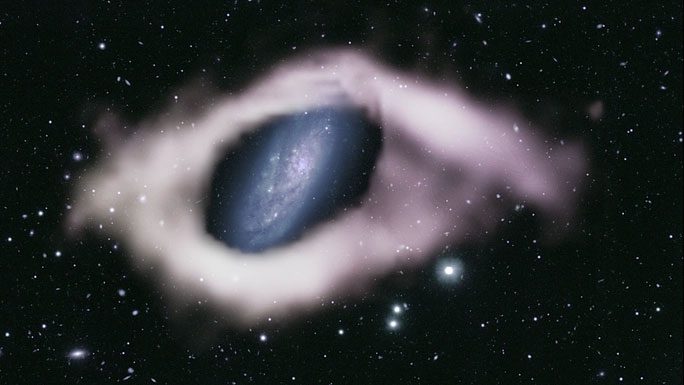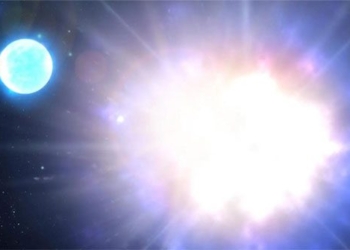The ASKAP radio telescope located in Western Australia has captured stunning images of a ghostly eye-shaped structure that spans 60,000 light-years.
According to a publication in the Monthly Notices of the Royal Astronomical Society, this unusual structure is a rare “polar-ring galaxy” known as NGC 4632.
Unlike the Milky Way, which houses Earth and boasts a brilliant light disk, this galaxy possesses a massive, eerie halo surrounding it. This halo is primarily composed of hydrogen gas and is tilted approximately 90 degrees relative to the plane of the galaxy.

The eye-shaped structure identified as a polar-ring galaxy – (Photo: Monthly Notices of the Royal Astronomical Society).
These spectacular eye-shaped structures may contain dust and stars, and are believed to occur in only 1 out of 1,000 galaxies.
However, with new findings, the research team led by astronomer Nathan Deg from Queen’s University (Kingston, Canada) suggests that their occurrence may be up to 30 times more frequent.
During a survey using the ASKAP radio telescope in Western Australia, Dr. Deg and colleagues discovered another similar structure surrounding the galaxy NGC 6156.
The “polar ring” of NGC 4632 is still more prominent, spanning up to 60,000 light-years. Combined with the main star disk of the galaxy, the entire cluster resembles a gigantic eye staring directly at Earth.
The peculiar structure of polar-ring galaxies could help unlock new insights into how galaxies form and evolve in the universe. It remains unclear why some galaxies have polar rings while most do not, according to Science News.
One hypothesis suggests that polar rings form during galaxy collisions.
To answer this question, astronomers need to search for more similar polar-ring galaxies. However, these “eyes” are difficult to distinguish. Some distorted galaxies also take on eye-like shapes, but they are not polar-ring galaxies.





















































